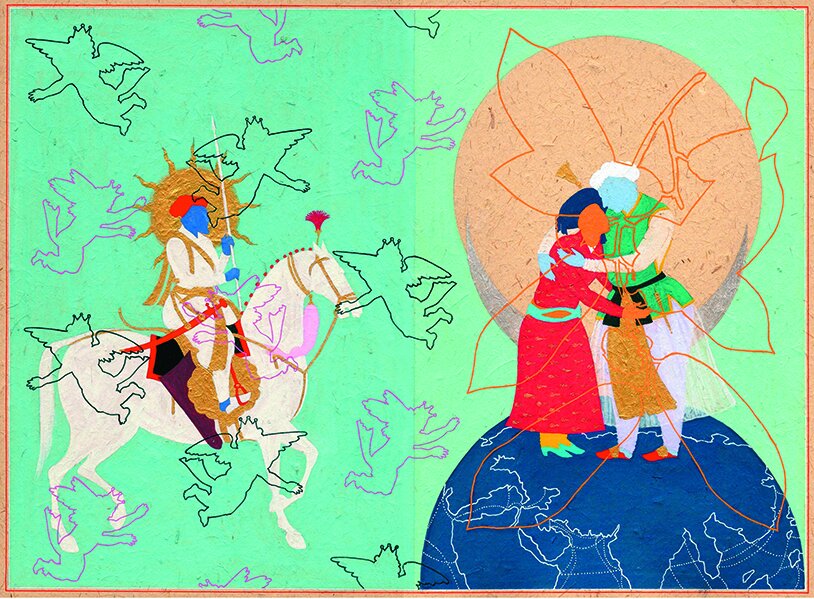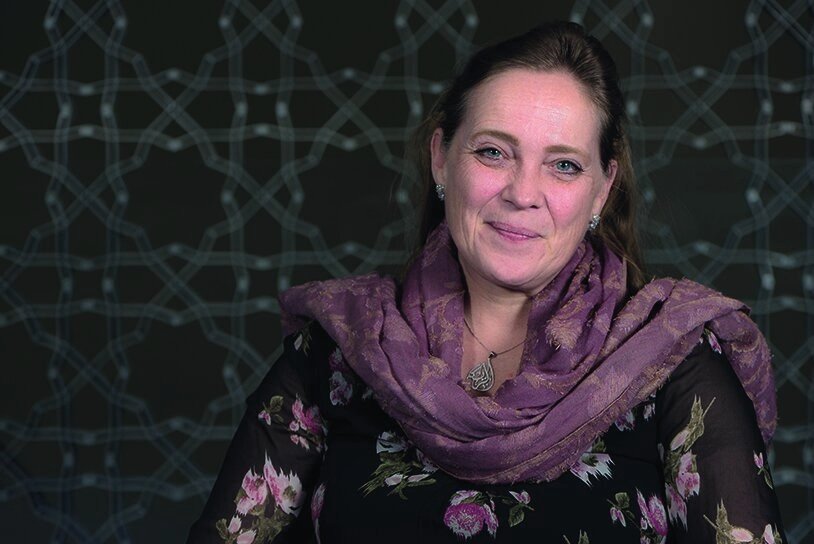Highlights

Morphing Landscape: Hong Xian’s Ink Abstraction
In the second half of the 20th century, Houston-based artist Hong Xian (Margaret Chang, b. 1933) crafted a remarkable corpus of abstract ink paintings. By the late 1970s, her work had reached a wider audience in the United States through solo touring exhibitions organized by Chu-tsing Li (1920–2014), a Chinese American art historian and active promoter of young modernist artists from Taiwan and the United States.

Interview with Artist Arnold Chang and Exhibition Curator Clarissa von Spee
My process is different from many contemporary Chinese ink painters. I don’t begin with a clear image in my mind. I generally just start by making a few lines and then allow the brush to lead me. I react to the textures that naturally arise from the interaction of the ink and paper.

Solace in Painting? Diasporic Artists and the Market for Conflict
Solace in Painting explores the foundational question of how we raise awareness about and effectively characterize the artwork of conflicted artists of the diaspora who never produced overt ‘conflict art’. This question is examined through the lives and artwork of three Asian diasporic painters: Chao Shao-an (also known as Zhao Shao'ang, 1905–1998, Keisho Okayama (1934–2018), and Ann Phong (b. 1957).

Loaded Histories: The Global Constructions of Nusra Latif Qureshi
One of the most striking qualities about the work of contemporary artist Nusra Latif Qureshi is how she illustrates the absent. Her work embraces the traditional, while maintaining a shrewd eye towards historical content and the conceptual. Born in 1973, Qureshi earned her BFA at the National College of Arts (NCA) in Lahore, as part of a contemporary miniature painting programme . Like her classmates, she began her training by copying illustrated manuscript paintings from the Mughal, Rajput and Persian schools. The focus on technical precision, repetitive exercise and careful observation that this required acted as a stepping-stone towards contemporary global art practice.

An Interview with Amna Naqvi
Amna Naqvi’s lifelong love of art, literature and learning has come together in the AAN Foundation, an effort to provide sup-port and platforms for cultural projects related to Asia. Born in Pakistan, Amna and her family now call Hong Kong home, having also lived previously in Indonesia and Singapore. Although contemporary art is a major passion—the AAN Collection is the largest such private assemblage of Pakistani contemporary art—history figures prominently in her interests and in her development as a collector and arts patron. Alexandra Seno talks with Amna about her connection with art.

An Interview with Dr Ulrike Al-Khamis: Interim Director and CEO, Aga Khan Museum
Since the museum’s opening in 2014, we have worked consistently to foster a greater appreciation of the contributions that Muslim civilizations have made, and continue to make, to world heritage, as well as the intercultural dialogue and interconnectedness between them and other cultures.

The Kathmandu Triennale 2077
The Kathmandu Triennale 2077, presented 1–31 March 2022, was the fourth edition of Nepal’s premier international platform featuring local, national, and global contemporary art. Organized by the Nepal Ministry of Culture, Tourism, and Civil Aviation and the Siddhartha Arts Foundation, along with Para Site in Hong Kong, the Triennale discarded the Gregorian calendar for its title in favour of the Nepali Bikram Sambat alternative calendar date of 2077.
More than seventy local, national, and international nonprofit organizations, government entities, corporations, media sponsors, and individuals helped make the Triennale become a reality. Under the leadership of the curatorial team consisting of Cosmin Costinas, Sheelasha Rajbhandari, and Hit Man Gurung, the Triennale featured more than 300 artworks created by 130 artists from forty countries on display at five culturally and historically significant Kathmandu venues. English and Nepali texts accompanied all exhibition artwork, and extensive public programming was held at each location, including performances, workshops, and lectures.
Featuring a wide selection of art practices and approaches, the Triennale included performance, installation, photo, slide, and video art; mixed-media, print, acrylic, oil, tempera, and ink painting; and traditional folk art, painting, sculpture, and textiles, offering visitors unique insights into local, national, and global issues.

‘Matthew Wong: Blue View’ at the Art Gallery of Ontario, Canada, 13 August, 2021–18 April, 2022
The first non-commercial exhibition of the paintings of the late Hong Kong–Canadian artist Matthew Wong (b. 1984, Toronto–d. 2019, Edmonton), ‘Blue View’ at the Art Gallery of Ontario (AGO), displays the most recent works made by Wong before his untimely death by suicide. A protean image maker, Matthew Wong painted inventively in oil and gouache, mobilizing a vast knowledge of Euro-American and East Asian painting that far surpassed the sources he noted in interviews (for example, Vogel, 2022). Wonderfully, the AGO exhibition, organized by the museum’s chief curator Julian Cox, presents Wong’s paintings without over-interpreting them: the catalogue text and didactic materials in the galleries are brief. These laconic statements permit Wong’s paintings, which reward close looking, distant views, and repeated encounters, to be seen for their considerable technical strengths.
